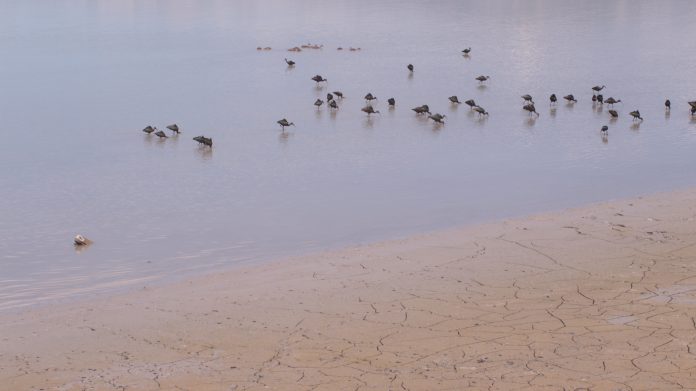
SALT LAKE CITY, Utah, July 12, 2017 (Gephardt Daily) — Blue-green algae recently discovered in Utah Lake’s Provo Bay has now spread to the majority of the lake, officials said Wednesday.
The spread has prompted Utah County Health Department (UCHD) to expand its warnings that caution people to avoid immersion in the water due to the presence of algal species that can cause irritation and have the potential to produce toxins, the Utah Department of Environmental Quality said in a news release.
Warning signs caution people, their pets and other animals to stay out of the lake because contact can cause headaches, gastrointestinal distress and skin irritation even without the presence of toxins, the news release said. Signs will be posted at popular access sites around the lake.
“The Utah Department of Environmental Quality’s Division of Water Quality analyzed the tests results collected July 6 and July 11,” the news release says. “The July 6 results show the cell-count concentrations spreading and increasing in density in the southern and western portions of the lake. Toxins were non-detect on the July 6 samples. Tests on July 11 samples confirm the toxins microcystin and anatoxin-a are present. This is an indication of more serious health concerns, but not yet at the level warranting closure.”
The DEQ and Utah Department of Health developed public health advisories that align with national and international guidelines based on cyanobacterial cell density and toxin concentrations.
Two weeks ago, the UCHD and Utah State Parks first posted warning signs at Provo Harbor, the closest access point to Provo Bay, after water tests detected the presence of algal species that have the potential to produce toxins.
“Although blue-green algae are a natural part of many freshwater ecosystems, under the right conditions they can expand rapidly,” the news release says. “High levels of nutrients in the water, combined with warm temperatures, abundant sunlight, and calm water, can promote growth, resulting in extensive blooms. These blooms consist of cyanobacteria (often referred to as blue-green algae), a type of bacteria that poses risks to humans, wildlife, domestic animals, and fish. Symptoms of exposure include headache, fever, diarrhea, abdominal pain, nausea and vomiting, and sometimes allergic-like reactions from skin contact. The symptoms of exposure to toxins are much more severe.”
Based on test results reported Wednesday, the level of cyanotoxins in Utah Lake is not considered a health threat to livestock at this time. The Utah Department of Agriculture and Food will continue to monitor data and provide direction to the agriculture community as the cyanotoxin concentrations change.
The UDAF advises livestock owners to locate an alternative source of water should cyanotoxins rise to unhealthy levels in the future.
For concerns about possible human exposure, call the Utah Poison Control Center at 800-222-1222 or your physician.
The DEQ will continue to provide updated information here.




